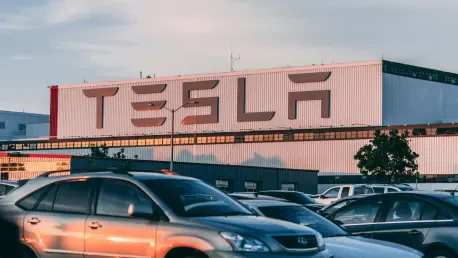When Tesla ventured into the insurance market in 2019, it promised a game-changing experience for its vehicle owners with lower premiums and rapid service tailored to their electric cars, but this ambitious move has unraveled into a significant regulatory battle with the California Department of Insurance (CDI). Consumer dissatisfaction and systemic failures have come to light, far from delivering on its initial vision. Tesla’s insurance arm has been accused of unfair claims practices and operational shortcomings that have harmed policyholders and drawn intense scrutiny. Reports of delays, denials, and inadequate responses have painted a troubling picture, raising questions about the company’s ability to manage a regulated industry. This article explores the root causes of the CDI’s enforcement actions, the specific issues plaguing Tesla’s insurance operations, and the broader implications for the company and its customers in a landscape where innovation must align with accountability.
Early Challenges and Rising Complaints
Tesla’s entry into insurance was met with high expectations, but early signs of trouble emerged almost immediately after its 2019 launch, as technical issues like website crashes frustrated potential customers and high quotes contradicted promises of affordability. These initial hiccups hinted at deeper problems that would soon surface. As the years progressed, the California Department of Insurance began noting a sharp uptick in consumer grievances, particularly around claims handling. By 2022, policyholders reported unreasonable denials and significant delays, issues that pointed to a lack of readiness for the volume of claims Tesla faced. The regulator discovered critical staffing shortages, including a vacant Head of Claims position for an extended period, which only compounded the operational chaos. This foundation of early missteps and growing dissatisfaction set the stage for a broader investigation, revealing a pattern of neglect that failed to meet both customer expectations and regulatory standards in a highly scrutinized industry.
The scale of the problem became undeniable as complaints poured into the CDI, escalating from a modest 83 in 2022 to over 1,400 by September 2024, a clear indicator of systemic failure. Many of these grievances centered on Tesla’s inability to process claims efficiently, leaving policyholders in limbo during critical times. The regulator’s findings highlighted thousands of violations of California’s insurance code, with many stemming from basic lapses in communication and timeliness. Such widespread issues suggested that the company had underestimated the complexities of insurance operations, prioritizing innovation over infrastructure. For customers, this translated into financial strain and frustration, as their trust in a brand known for cutting-edge technology was undermined by poor service. The mounting volume of complaints not only caught the attention of regulators but also signaled that Tesla’s ambitious venture was faltering under the weight of its own promises, necessitating urgent corrective action.
Systemic Failures and Regulatory Accusations
As the California Department of Insurance delved deeper into Tesla’s insurance practices, it uncovered what it described as “willful unfair claims settlement practices,” a serious accusation that pointed to deliberate or negligent mishandling of policyholder claims. The regulator documented egregious delays at every stage of the claims process, from initial filing to final resolution, often leaving customers without timely support after accidents or damages. Additionally, there were numerous instances where claims were denied without reasonable justification, alongside a failure to conduct thorough and objective investigations. These practices, according to the CDI, resulted in significant harm to policyholders, both financially and emotionally. Despite being notified of these issues repeatedly, Tesla and its partner, State National Insurance Company, struggled to implement effective solutions, raising concerns about accountability and commitment to regulatory compliance in their operations.
Even after Tesla acknowledged the problems and pledged improvements, such as hiring more staff and appointing a new Head of Claims in 2023, the situation showed little sign of genuine progress. The CDI recorded nearly 3,000 violations of state insurance laws since 2022, with a substantial number tied to the company’s failure to respond to customers within the mandated 15-day period. This persistent noncompliance, despite years of warnings and opportunities for reform, painted a picture of an organization unable to align its innovative aspirations with the practical demands of the insurance sector. For policyholders, the ongoing delays and denials eroded confidence, while for regulators, the lack of improvement suggested a deeper cultural or structural issue within Tesla’s insurance arm. The decision to pursue formal enforcement action by the CDI underscored the severity of these failures, marking a critical turning point in the company’s attempt to navigate this regulated space.
Mounting Violations and Financial Consequences
The escalating crisis within Tesla’s insurance division reached new heights in the current year, with complaints and violations surpassing the combined total of the previous three years, a stark reflection of unresolved issues. The California Department of Insurance’s filings detailed the profound impact on policyholders, many of whom faced financial hardship due to delayed or denied claims that left them covering costs out of pocket. The emotional toll of navigating such a dysfunctional system further compounded their distress, as they grappled with a provider that seemed unresponsive to their needs. The sheer volume of documented violations—thousands since 2022—highlighted a breakdown in basic operational standards, prompting the CDI to take decisive action. With Tesla now facing potential penalties of up to $5,000 per unlawful act and $10,000 per willful act, the financial stakes are immense, and the company has just 15 days to respond to the regulator’s latest filings.
This mounting crisis reveals a significant gap between Tesla’s public commitments to improvement and the reality of its operational performance, as evidenced by the continued surge in policyholder grievances. Independent investigations have corroborated the CDI’s findings, suggesting that even reported progress, such as staffing increases, has failed to address core deficiencies. The potential penalties represent not just a monetary burden but a warning that sustained noncompliance could lead to stricter oversight or even restrictions on Tesla’s ability to operate in California’s insurance market. For a company known for pushing boundaries, this regulatory clash serves as a reminder of the importance of balancing innovation with responsibility. The outcome of this enforcement action could set a precedent for how Tesla addresses similar challenges in other regions or sectors, making it a pivotal moment for the company to reassess its approach and prioritize customer trust over rapid expansion.
Legal Battles and Long-Term Implications
Beyond the immediate regulatory scrutiny, Tesla’s insurance arm faces additional pressure from the legal realm, with a proposed class action lawsuit filed in July alleging deliberate delays and minimized payouts to policyholders. This legal challenge, combined with the CDI’s findings, raises the possibility of third-party liability exposure, which could amplify the company’s risks and lead to further civil litigation. Such developments threaten to drain financial resources through settlements or damages while casting a shadow over Tesla’s reputation as a customer-focused innovator. The intersection of regulatory penalties and legal battles underscores the high stakes of operating in a heavily regulated industry without robust systems in place. For policyholders, these actions offer a potential avenue for redress, but they also highlight the broader challenges of seeking accountability from a company struggling to manage its ambitious scope.
The long-term implications of these combined regulatory and legal troubles could reshape how Tesla approaches its insurance business and other non-core ventures. A tarnished reputation in one sector risks spilling over into public perception of the brand as a whole, potentially affecting customer loyalty and investor confidence. The financial strain of penalties and lawsuits may also force a reevaluation of resource allocation, diverting funds from innovation to compliance efforts. This situation serves as a cautionary tale for tech companies venturing into regulated spaces, emphasizing the need for adequate infrastructure and oversight from the outset. Looking ahead, Tesla must navigate these challenges by implementing sustainable reforms, ensuring transparency, and rebuilding trust with both regulators and customers. The resolution of these issues will likely influence how similar initiatives are structured in the future, setting a benchmark for balancing bold ideas with practical execution.









